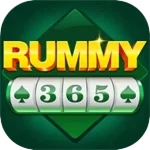Description
The Complete Handbook of Rummy: Methods and Strategies for Winning Rummy is a traditional card game that has enthralled players for many years all over the world. Both casual players and serious competitors find it to be an entertaining hobby due to its unique combination of skill, strategy, & a little bit of luck. Anyone hoping to get better at rummy must grasp the fundamentals. Rummy’s basic objective is to merge all of your cards before your opponents do, which is accomplished by creating sets and runs from a hand of cards. A run is a string of three or more cards in the same suit, whereas a set is made up of three or four cards of the same rank but different suits.
Two or more players can participate in the game, and the rules can change slightly based on the particular variation being played, like Gin Rummy, Indian Rummy, or Kalooki. Depending on the variation, players are dealt either seven or ten cards to start playing Rummy. With one card facing up to begin the discard pile, the remaining cards form a draw pile. Each player draws from the draw pile or the discard pile, after which they discard one card from their hand. Points are determined using the remaining unmelded cards in each player’s hand after the round is over & one player has successfully melded all of their cards.
Gaining a firm foundation in Rummy requires an understanding of these basic mechanics since they pave the way for more complex tactics and strategies that can result in success. Understanding the fundamentals of rummy is the first step towards creating a winning strategy that will help you outplay your rivals. A proficient Rummy player needs to be flexible and able to read the game as it develops. Concentrating on creating melds early in the game is one successful tactic.
You may lower the quantity of unmelded cards in your hand and improve your chances of going out ahead of your opponents by giving priority to the formation of sets & runs right away. You can also make well-informed decisions about which cards to keep or discard by monitoring which cards have been discarded, which can give you important information about what your opponents are attempting to gather. Effective hand management is a crucial component of creating a winning strategy.
In addition to creating melds, this entails paying attention to the cards you are holding and how you might use them in subsequent turns. To reduce your possible losses in the event that another player goes out, it might be prudent to discard all of your high-point cards first if you have a number of them that are not in any melds. If you are unable to meld all of your cards by the end of a round, however, it may be beneficial to hold onto low-point cards in order to maintain a lower score. These tactics, along with astute observation and flexibility, can greatly increase your chances of winning at rummy.
An essential component of rummy that frequently decides a game’s result is discarding. To become proficient in this art, you must have a thorough awareness of both your own hand and your opponents’ possible hands. Take into account both the potential advantages for your opponents as well as the impact on your own melds when choosing which card to discard. It might be prudent to refrain from discarding cards that could assist your opponent in finishing their melds, for instance, if you observe that they have been routinely taking cards from the discard pile. By strategically disposing of items, you can advance your game while posing challenges to your opponents. Also, timing is crucial for efficient discarding.
Some cards that might later form melds may be advantageous to hold onto early in the game. Eliminating high-point cards, which could result in serious penalties if another player wins the round, becomes more crucial as the game goes on and you approach elimination. It takes time and experience to balance these factors, but you can greatly enhance your overall Rummy performance by improving your discarding techniques.
Many Rummy variations get an exciting twist from wild cards, which give players special chances to improve their hands. When forming melds, a wild card is a great tool because it can represent any card in the deck. You can improve your gameplay & raise your winnings by knowing how to take advantage of wild cards. Making strategic use of wild cards in your melds is one useful tactic. For example, using a wild card can help you fill the gap & make a valid meld if you have two cards that make up a run but don’t have the other card to finish it.
Also, it’s critical to consider how wild cards may affect the hands of your rivals. The presence of a wild card in the discard pile may be a sign that an opponent is almost finished with their melds. In these situations, think about changing your approach by eliminating cards that might enable them to finish their runs or sets. You may take advantage of this potent aspect of rummy to obtain an edge over your opponents by being conscious of how you use wild cards and how they impact other players at the table. The core of Rummy gameplay is melting, which is necessary to win.
Being able to meld well not only lets you hold fewer unmelded cards, but it also makes your opponents work harder to keep up. When it is feasible, concentrate on producing several sets and runs at once in order to effectively use melding. This strategy reduces the possibility of holding onto high-point cards, which could result in serious penalties if another player wins, while simultaneously increasing your chances of going out. When it comes to melding, timing is also very important. Even though it could be tempting to lay down every meld at once, think about saving some for later in the game when you can see more clearly what your opponents are holding.
You can surprise your opponents and possibly ruin their plans by waiting for the ideal time to reveal your melds. This method of strategic melding can greatly improve your overall Rummy performance, but it does require careful observation & analysis. Points are crucial in Rummy because they determine who wins at the conclusion of each round or game. As a result, any serious player should prioritize making the most of their point opportunities. Keeping track of which cards have already been discarded and which are still in play is an efficient method to accomplish this.
With this information, you can decide which cards, based on their possible point value, to pursue and which to avoid. Think about how you can strategically blend and discard to control point opportunities as well. For example, it might be prudent to focus on melding lower-point cards first & save your high-point cards for later in the game, when you have a better idea of your opponents’ hand combinations, if you have high-point cards that aren’t in any melds. You can minimize possible losses and put yourself in a successful position by strategically managing your point opportunities throughout each round. Any rummy player hoping to get better must be able to recognize important patterns & sequences.
Based on the cards that are drawn and discarded during play, patterns frequently form, giving you important information about the melds that you or your opponents might be attempting to create. A player may be trying to finish runs or sets involving cards from a specific suit or rank if you observe, for instance, that multiple players are routinely discarding cards from that suit or rank. You can modify your approach and decide which cards to keep or discard more intelligently if you pay attention to these trends. Also, you can predict possible moves from your opponents by being aware of common Rummy sequences.
An opponent may indicate that they are about to go out but are still at risk of penalties if they are unable to finish their melds in time if, for example, they pick up a card that completes a run for them but leaves them holding high-point unmelded cards. While playing, you can strategically position yourself and monitor other players’ possible threats by identifying these important patterns and sequences. It takes a mix of strategic thinking, astute observation, and flexibility to stay ahead of your opponents in rummy.
Constantly keeping an eye on both your own and your opponents’ hands is a good strategy to keep an advantage. You may learn a lot about their tactics and predict their next moves by keeping an eye on which cards they draw from the discard pile and which ones they decide to discard themselves. Also, when playing, think about using psychological tricks. You can disrupt your opponents’ strategies and cause them to make poor choices based on false assumptions about your hand by bluffing or pretending to be interested in specific cards.
You can create an environment where you stay one step ahead of the other players during each round of rummy by combining these observational skills with psychological strategies. To sum up, learning Rummy entails comprehending its basic principles and creating sophisticated strategies that improve gameplay efficiency. Every element plays a vital role in overall success in this engrossing card game, from identifying patterns & staying ahead of opponents to perfecting discarding strategies and maximizing wild cards. Players can improve their abilities and have endless hours of entertaining gameplay while aiming for victory at every opportunity with practice and commitment.




